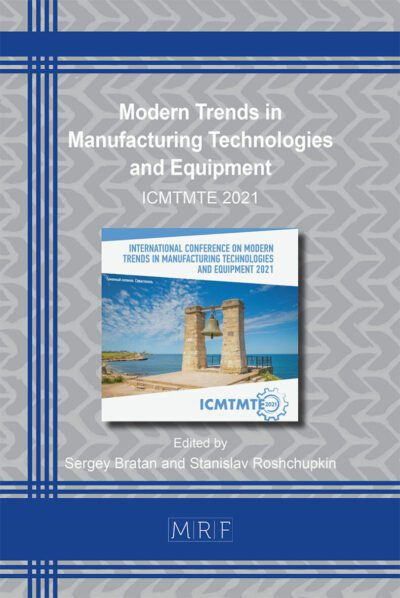Optical scanning application for numerical calibration of strain analysis on injection molded rail fastening components
Giulia Zaniboni, Keltoum Oubellaouch, Riccardo Pelaccia, Vincenzina Siciliani, Leonardo Orazi, Barbara Reggiani
Abstract. In the injection molding process, handling shrinkage is crucial to reduce warpage in molded parts. As demand increases for complex components with high-quality standards, including tight tolerances and defect-free parts, numerical tools have become essential for optimizing the process and improving product performance. This work proposes a novel method to accurately predict part warpage using the Anisotropic Thermo-Viscous Elastic Residual Stress Model implemented in Moldflow, with a focus on calibrating numerical simulations through manual adjustment of the Coefficients of Linear Thermal Expansion (CLTE). Using optical 3D scanning acquisitions to compare experimental results with simulation predictions, the method enables precise calibration that reduces numerical-experimental discrepancies in warpage predictions.
Keywords
Warpage Analysis, 3D Scanning, Injection Molding, Calibration, Numerical Model
Published online 5/7/2025, 10 pages
Copyright © 2025 by the author(s)
Published under license by Materials Research Forum LLC., Millersville PA, USA
Citation: Giulia Zaniboni, Keltoum Oubellaouch, Riccardo Pelaccia, Vincenzina Siciliani, Leonardo Orazi, Barbara Reggiani, Optical scanning application for numerical calibration of strain analysis on injection molded rail fastening components, Materials Research Proceedings, Vol. 54, pp 2426-2535, 2025
DOI: https://doi.org/10.21741/9781644903599-262
The article was published as article 262 of the book Material Forming
![]() Content from this work may be used under the terms of the Creative Commons Attribution 3.0 license. Any further distribution of this work must maintain attribution to the author(s) and the title of the work, journal citation and DOI.
Content from this work may be used under the terms of the Creative Commons Attribution 3.0 license. Any further distribution of this work must maintain attribution to the author(s) and the title of the work, journal citation and DOI.
References
[1] A. Codou, M. Misra, A.K. Mohanty, Sustainable biocarbon reinforced nylon 6/polypropylene compatibilized blends: Effect of particle size and morphology on performance of the biocomposites, Composites Part A: Applied Science and Manufacturing 112 (2018) 1–10. https://doi.org/10.1016/j.compositesa.2018.05.018
[2] K. Oubellaouch, R. Pelaccia, N. Bonato, N. Bettoni, S. Carmignato, L. Orazi, L. Donati, B. Reggiani, Assessment of fiber orientation models predictability by comparison with X-ray µCT data in injection-molded short glass fiber-reinforced polyamide, Int J Adv Manuf Technol 130 (2024) 4479–4492. https://doi.org/10.1007/s00170-024-12990-5
[3] H. Fu, H. Xu, Y. Liu, Z. Yang, S. Kormakov, D. Wu, J. Sun, Overview of Injection Molding Technology for Processing Polymers and Their Composites, ES Materials & Manufacturing 8 (2020) 3–23. https://doi.org/10.30919/esmm5f713
[4] N. Zhao, J. Lian, P. Wang, Z. Xu, Recent progress in minimizing the warpage and shrinkage deformations by the optimization of process parameters in plastic injection molding: a review, The International Journal of Advanced Manufacturing Technology 120 (2022) 85–101. https://doi.org/10.1007/s00170-022-08859-0
[5] E.R. Dorp, B. Möginger, B. Hausnerova, Thermal expansion of semi-crystalline polymers: Anisotropic thermal strain and crystallite orientation, Polymer 191 (2020) 122249. https://doi.org/10.1016/j.polymer.2020.122249
[6] S. Kitayama, S. Natsume, Multi-objective optimization of volume shrinkage and clamping force for plastic injection molding via sequential approximate optimization, Simulation Modelling Practice and Theory 48 (2014) 35–44. https://doi.org/10.1016/j.simpat.2014.07.004
[7] H. Hassan, N. Regnier, C. Pujos, E. Arquis, G. Defaye, Modeling the effect of cooling system on the shrinkage and temperature of the polymer by injection molding, Applied Thermal Engineering 30 (2010) 1547–1557. https://doi.org/10.1016/j.applthermaleng.2010.02.025
[8] D. Masato, M. Sorgato, G. Lucchetta, A new approach to the evaluation of ejection friction in micro injection molding, Journal of Manufacturing Processes 62 (2021) 28–36. https://doi.org/10.1016/j.jmapro.2020.12.032
[9] P. Kennedy, R. Zheng, High Accuracy Shrinkage and Warpage Prediction for Injection Molding, in: Proc. of Annual Technical Conference (ANTEC), 2002
[10] A. Cellere, G. Lucchetta, Identification of Crims Model Parameters for Warpage Prediction in Injection Moulding Simulation, Int J Mater Form 3 (2010) 37–40. https://doi.org/10.1007/s12289-010-0701-8
[11] F. Zhiliang, X. Shoudong, Z. Zhihao, R. Shishir, Dual Mesh Approach for Three-dimensional Warpage Simulation of Injection Molded Plastic Parts, in: NAFEMS World Congress, 2017
[12] Z. Fan, F. Costa, R. Zheng, B. Lin, J. XiaoShi, P. Kennedy, Three-Dimensional Warpage Simulation for Injection Molding, in: Proc. of Annual Technical Conference (ANTEC), 2004
[13] Z. Fan, H. Yu, Z. Zuo, R. Speight, Anisotropic thermo-viscous-elastic residual stress model for warpage simulation of injection molded part, in: Proc. of Annual Technical Conference (ANTEC), 2017
[14] F. Costa, A. Bakharev, Z. Yuan, J. Wang, Improved Injection Molding Warp Predictions by Characterization of Material Properties using Measured Shrinkage Data, in: 2023.
[15] K. Oubellaouch, A melt flow index-based approach for the viscosity curves determination, in: 2024: pp. 2720–2729. https://doi.org/10.21741/9781644903131-298
[16] B.P. Chang, M.A. Abdelwahab, A. Kiziltas, D.F. Mielewski, A.K. Mohanty, M. Misra, Effect of a Small Amount of Synthetic Fiber on Performance of Biocarbon‐Filled Nylon‐Based Hybrid Biocomposites, Macro Materials & Eng 306 (2021) 2000680. https://doi.org/10.1002/mame.202000680













